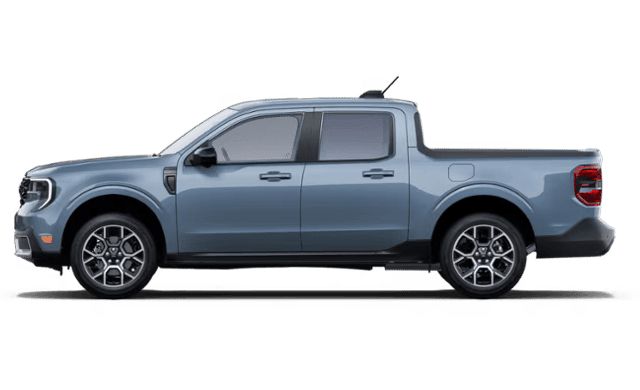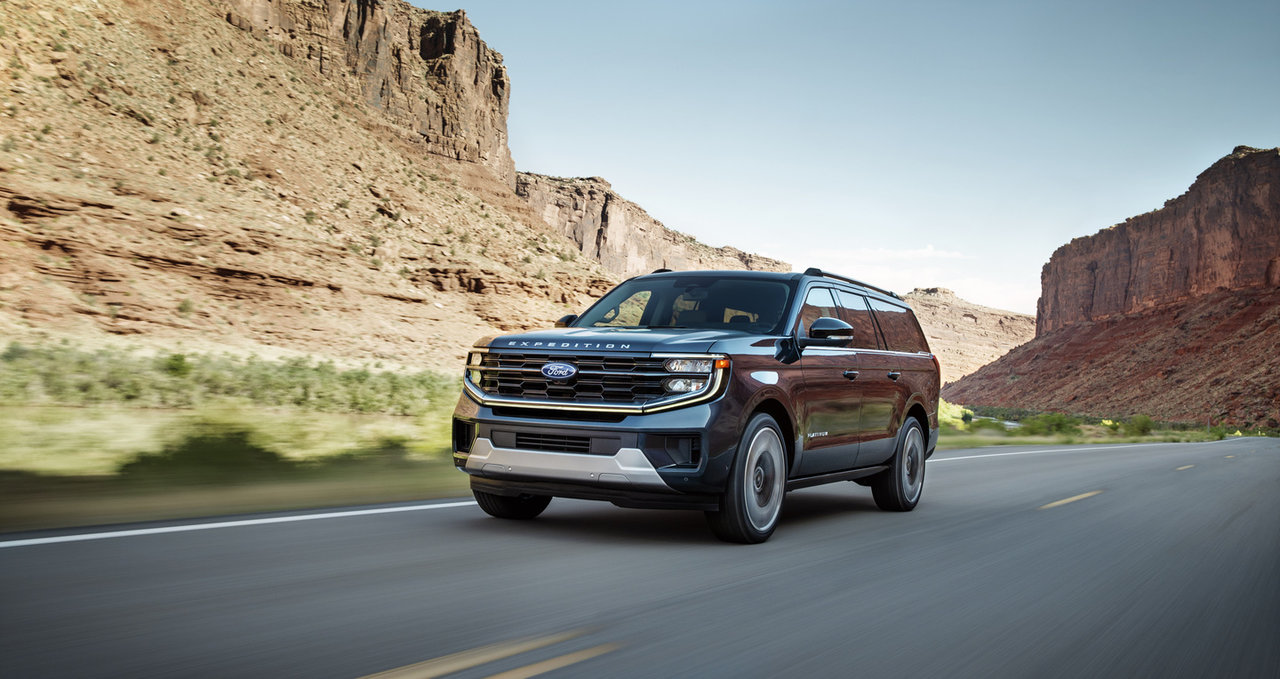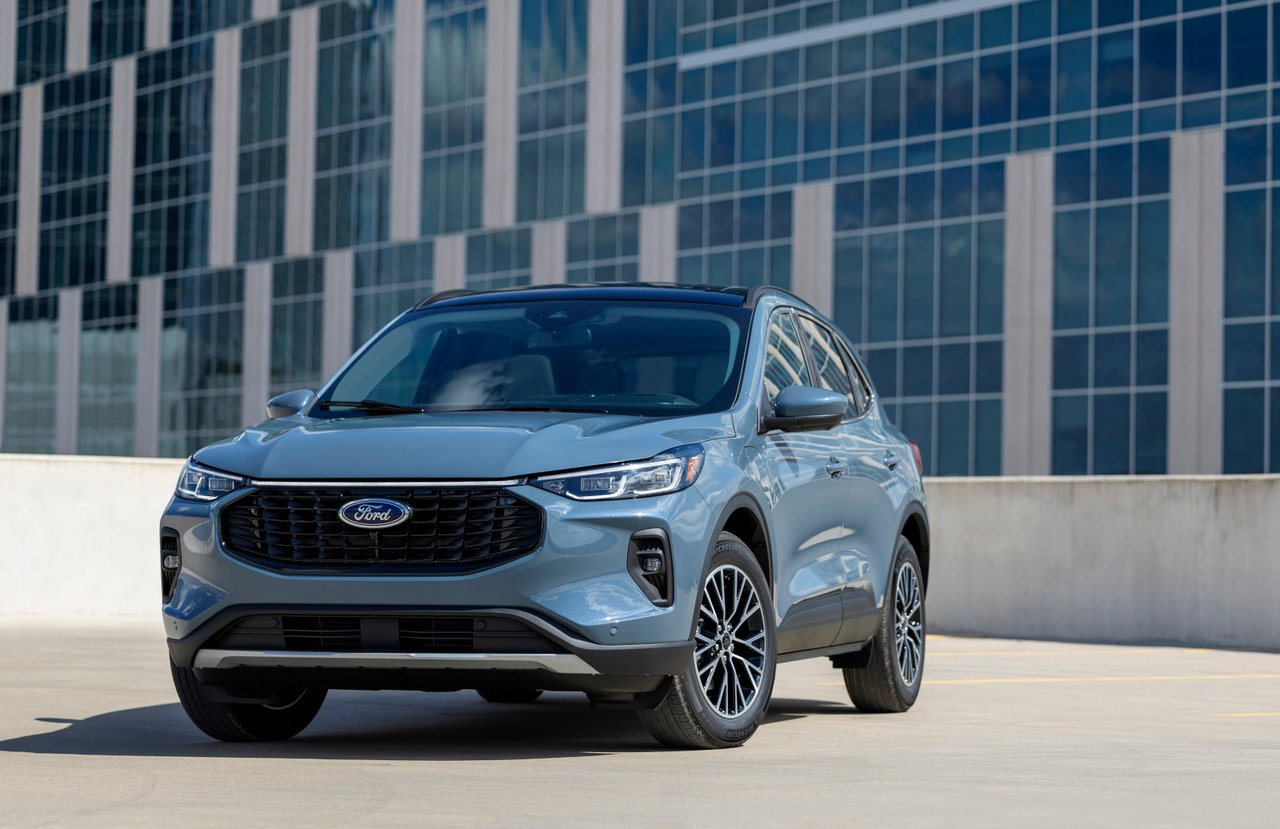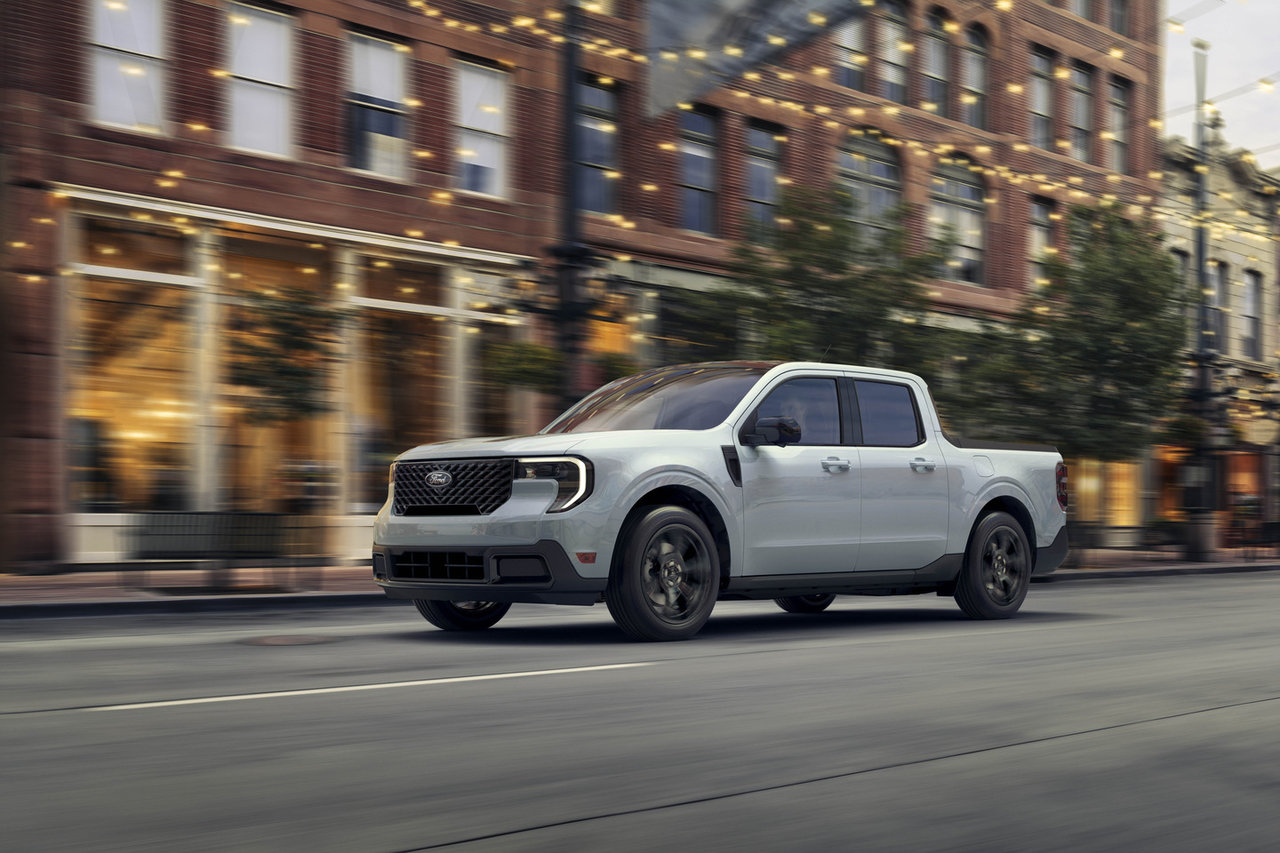September weather in Nova Scotia is unpredictable. One day brings bright sunshine, the next delivers fog so thick you can barely see the road ahead. Rain arrives without warning, wet leaves coat the pavement, and morning frost appears earlier each week. Fall in the Maritimes demands vehicles that adapt to changing conditions and help you stay safe when visibility drops or traction disappears.
Ford builds safety features into vehicles like the Explorer, Escape, Bronco Sport, and F-150 that work in the background to prevent accidents before they happen. These systems don't replace careful driving, but they add layers of protection when conditions turn difficult. Here are five Ford features designed to handle the weather Nova Scotia throws at you every fall.
BLIS (Blind Spot Information System)
Fog is common in Nova Scotia during fall, especially in coastal areas and the Annapolis Valley. When visibility drops, vehicles appear in your blind spots without warning. BLIS uses radar sensors in the rear bumper to monitor the areas beside and behind your vehicle. If a car, truck, or cyclist enters your blind spot, an indicator light appears in the side mirror.
The system works at highway speeds and in stop-and-go traffic. If you signal to change lanes while another vehicle is in your blind spot, the light flashes and may sound a chime to warn you. BLIS also includes Cross-Traffic Alert, which scans for vehicles approaching from the sides when you're backing out of a parking space or driveway. This feature is helpful in busy parking lots where visibility is limited.
BLIS is standard on the Escape, Explorer, Bronco Sport, and F-150. The system operates automatically—you don't need to activate it. The sensors are mounted low on the rear bumper, so they stay effective even in rain or light snow.
Pre-Collision Assist with Automatic Emergency Braking
Sudden stops are common in fall. A deer crosses the road. A car ahead brakes hard for a yellow light. A cyclist appears from behind a parked vehicle. Pre-Collision Assist uses a camera and radar to scan the road ahead for potential collisions with vehicles or pedestrians. If the system detects an object and determines a collision is likely, it alerts you with visual and audible warnings.
If you don't react in time, the system automatically applies the brakes to reduce the severity of the impact or avoid the collision entirely. The feature works at all speeds, from parking lots to highways. It's designed to react faster than a human can in emergency situations.
Pre-Collision Assist includes Pedestrian Detection, which specifically watches for people crossing the road or walking near the vehicle. This feature is useful in urban areas, school zones, and parking lots where pedestrians may be difficult to see in poor lighting or bad weather.
The system is standard on the Escape, Explorer, Bronco Sport, and F-150. It doesn't replace your responsibility to watch the road, but it adds a safety net when conditions make it harder to react quickly.
Rain-Sensing Wipers
Fall rain in Nova Scotia comes in bursts. One minute the windshield is clear, the next it's covered in water. Rain-sensing wipers use a sensor mounted near the rear-view mirror to detect moisture on the windshield. The system adjusts wiper speed automatically based on how much rain is hitting the glass.
Light rain triggers slow, intermittent wipes. Heavy rain increases the speed to keep the windshield clear. You don't need to adjust the wiper controls constantly—the system does it for you. This feature is helpful when driving through areas with variable rain, like coastal roads where fog mixes with drizzle, or highways where passing trucks throw water onto your windshield.
Rain-sensing wipers are available on the Explorer and Expedition, and standard on higher trims. The system turns on automatically when you drive in rain, though you can override it and control the wipers manually if you prefer.
Intelligent AWD with Disconnect
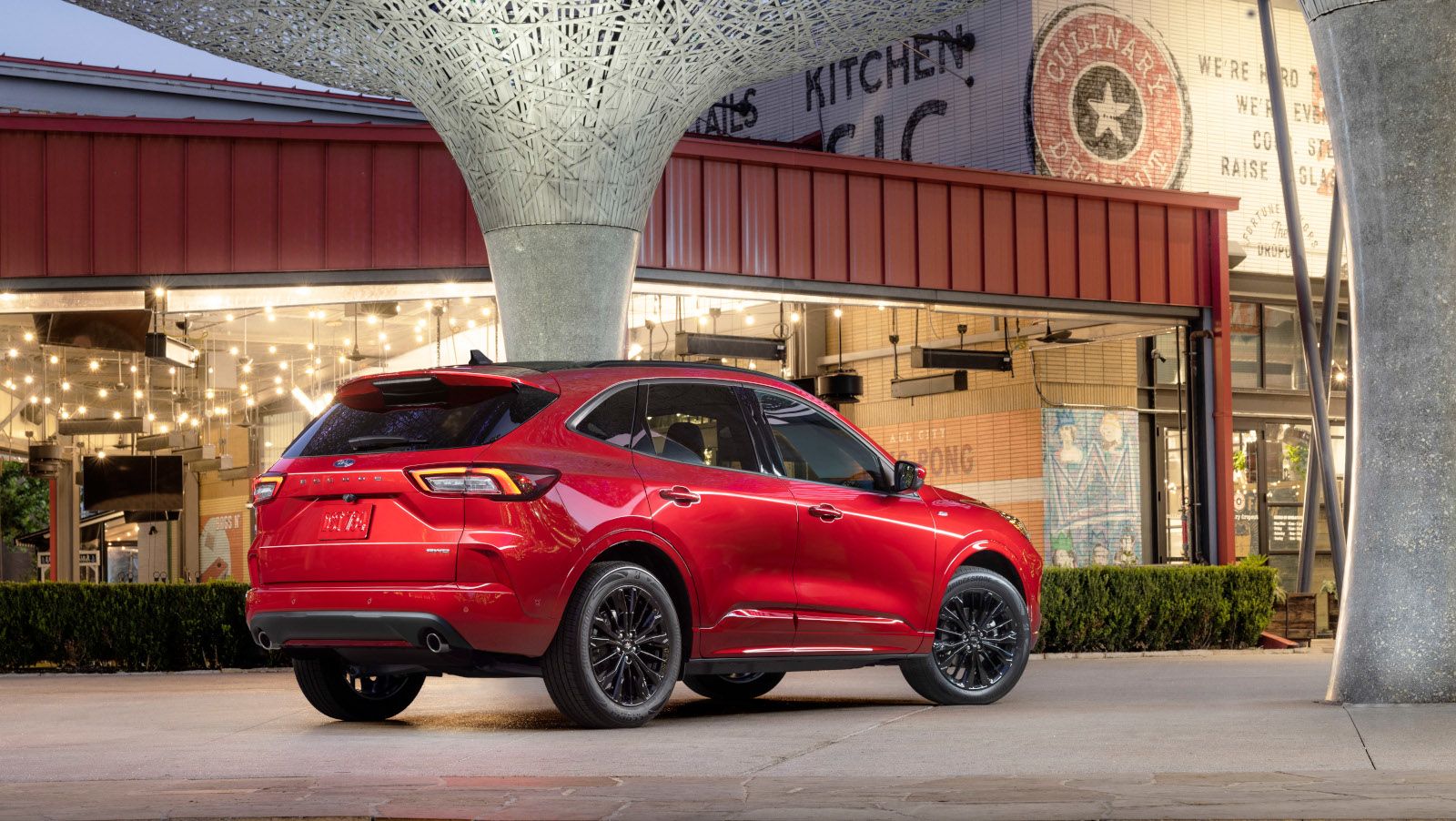
All-wheel drive improves traction on wet, icy, or gravel roads, but it reduces fuel economy when you don't need it. Ford's Intelligent AWD system monitors wheel speed, steering angle, and throttle input to determine when all-wheel drive is necessary. When conditions are dry and traction is good, the system disconnects the rear wheels and sends power only to the front. This improves fuel economy by reducing drag.
When the system detects wheel slip—like accelerating on a wet road or climbing a gravel driveway—it instantly engages the rear wheels and sends power where it's needed. The transition happens automatically and without driver input. You feel the vehicle grip better, but you don't notice the system working.
The Escape includes Intelligent AWD with Disconnect as an available feature. The system is designed for drivers who need AWD occasionally but don't want to pay the fuel penalty of full-time four-wheel drive. It's useful for Nova Scotia drivers who spend most of their time on dry pavement but encounter wet, icy, or unpaved roads regularly.
AdvanceTrac with RSC (Roll Stability Control)
AdvanceTrac is Ford's electronic stability control system. It monitors the vehicle's motion using sensors that track steering angle, speed, and yaw (rotation around the vertical axis). If the system detects that the vehicle is sliding or beginning to lose control, it applies brakes to individual wheels and reduces engine power to bring the vehicle back in line.
Roll Stability Control (RSC) adds an extra layer of protection by monitoring the vehicle's roll angle—how much it leans during turns. If the system detects excessive roll, it applies brakes and reduces power to help prevent a rollover. This feature is most useful in tall vehicles like the Explorer, Expedition, and F-150, which have higher centres of gravity.
AdvanceTrac with RSC is standard on the Explorer, Escape, Bronco Sport, F-150, and Expedition. The system works in the background and activates only when needed. You may notice a flashing light on the dashboard if the system engages, indicating that it's correcting a skid or slide.
The system is designed for emergency situations—like swerving to avoid an obstacle, hitting a patch of ice, or taking a corner too fast on a wet road. It doesn't make the vehicle immune to physics, but it reduces the risk of losing control when conditions turn difficult.
Key Takeaways
|
Feature
|
What It Does
|
Available On
|
|
BLIS (Blind Spot Information System)
|
Monitors blind spots and warns you when vehicles are beside or behind you
|
Escape, Explorer, Bronco Sport, F-150
|
|
Pre-Collision Assist with Automatic Emergency Braking
|
Detects potential collisions and applies brakes automatically if needed
|
Escape, Explorer, Bronco Sport, F-150
|
|
Rain-Sensing Wipers
|
Adjusts wiper speed automatically based on rainfall
|
Explorer, Expedition (available)
|
|
Intelligent AWD with Disconnect
|
Engages all-wheel drive only when needed to improve traction and fuel economy
|
Escape (available)
|
|
AdvanceTrac with RSC
|
Prevents skids and reduces rollover risk by controlling brakes and power
|
Escape, Explorer, Bronco Sport, F-150, Expedition
|
Learn More at Valley Ford
Fall weather in Nova Scotia demands vehicles that help you stay safe when conditions change. Visit our team at Valley Ford in Kentville to learn more about Ford safety features, see how these systems work, and explore vehicles built for Maritime driving.




